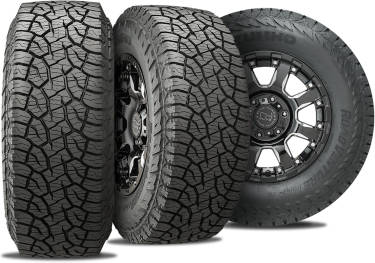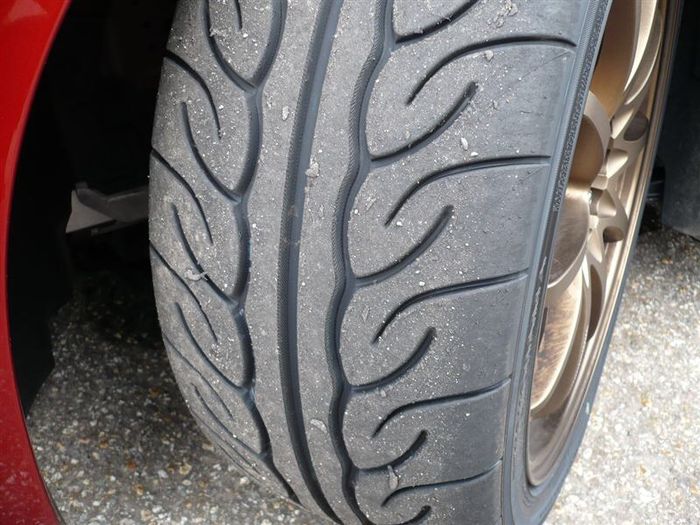All Categories
Featured
Table of Contents
The Michelin offered a comfy driving experience, characterised by receptive guiding and a progressive understeer equilibrium. Despite the cooler screening problems, Michelin's regular time and hold over 3 laps indicates its viability for real-world applications.
Another remarkable element was Yokohama's warm-up time. The tyre's very first lap was a 2nd slower than the second, indicating a temperature-related grasp rise. This suggests the Yokohama may beam in completely dry, race-like problems. However, for daily use, the Michelin could be a safer bet. Next off in line was the Hankook.
Wheel Balancing Services Near Me
It shared Michelin's safe understeer balance yet lacked the latter's determination to turn. Continental and Goodyear's performances were notable, with Continental's brand-new PremiumContact 7 showing a significant renovation in damp conditions contrasted to its precursor, the PC6. This version was much much less sensitive to pack modifications and behaved similar to the Michelin, albeit with a little less interaction at the limit.
It integrated the secure understeer balance of the Michelin and Continental with some stylish handling, showing both foreseeable and quick. As an all-rounder for this Golf GTI, Goodyear's Crooked range was the standout, showing excellent efficiency in the wet. Ultimately, the Bridgestone Potenza Sport took the crown as the fastest tyre, albeit by a little margin.
This tyre got grippier as it heated up, comparable to the Yokohama. Motorists seeking an interesting wet drive could find this tyre worth thinking about. The standout performer in wet stopping was the latest tire on examination, the PremiumContact 7, though the outcomes are nuanced. We carried out wet stopping examinations in 3 various methods, twice at the new state and as soon as at the worn state.
Top Tyre Repair Services (Malaga WA)
Ideally, we desired the cool temperature level test to be at around 5-7C, however logistical delays meant we checked with an average air temperature of 8C and water at 12C. While this was cooler than common examination conditions, it was still warmer than real-world conditions. The warm temperature test was done at approximately 18C air and 19C water.
The 3rd run entailed wet braking tests on worn tyres, especially those machined down to 2mm with a small encounter. While we meant to do more with these used tyres, weather condition constraints limited our testing. Nevertheless, it's worth noting that damp braking is most crucial at the worn state, as tyres typically improve in completely dry conditions as they use.

Bridgestone, Goodyear, and Michelin saw the least efficiency decrease when put on. The Hankook tire signed up the smallest efficiency decrease as temperature levels cooled, but it was amongst the most influenced when worn.
Reliable Tyre Performance
The take-home message here is that no solitary tire stood out in all aspects of wet braking, showing a complicated interplay of variables affecting tire efficiency under different problems. There was a standout tire in aquaplaning, the Continental ended up top in both straight and bent aquaplaning, with the Michelin and Goodyear additionally extremely excellent in deeper water.

Yokohama can take advantage of a little more hold, an issue potentially affected by the cooler problems. When it comes to taking care of, all tyres performed within a 2% variety on the lap, showing their high-grade performance (Tyre fitting services). Considering these tyres basically target the same consumer, it's interesting to observe the considerable differences in feeling.
The surprise is since the PremiumContact 6 was among my favourites for sporty completely dry drives, however its follower, the PremiumContact 7, seems elder and appears like Michelin's efficiency. Amongst these, Hankook was the least exact in guiding and interaction at the limit. Tyre tuning. Both Michelin and Continental supplied lovely first steering, albeit not the fastest
If I were to advise a tyre for a quick lap to a novice, say my papa, it would be just one of these. Then we have the 'fun' tires, namely Yokohama and Bridgestone. Both were speedy to steer and really felt sportier than the others, however the compromise is a more playful back side, making them extra tough to handle.
Leading Cheap Car Tyres – Malaga WA
It offered similar steering to Bridgestone yet supplied much better responses at the limitation and far better hold. The Bridgestone Potenza Sporting activity, nonetheless, appeared to break down fairly swiftly after just 3 laps on this requiring circuit. There's Goodyear, which positioned itself somewhere in between the enjoyable tires and those often tending in the direction of understeer.
All in all, these tyres are outstanding performers. In terms of tyre wear, the method used in this examination is what the market refers to as the 'gold requirement' of wear.
Both the Bridgestone and Yokohama tires dramatically underperformed in comparison to the other four tires in terms of rolling resistance, with Continental a little outshining the remainder. Concerning the comfort degree of the tires, as prepared for, the majority of demonstrated an inverted relationship with handling. The Continental, Michelin, and Goodyear tyres carried out finest across numerous surface area kinds evaluated.

Bridgestone started to show indications of suppleness, while Yokohama was particularly rough over craters. We did gauge inner sound levels; however, as is often the situation, the results were carefully matched, and because of weather restraints, we were not able to perform a subjective assessment of the tyres noise. Finally, we considered abrasion numbers, which measure the amount of tyre tread lost per kilometre, normalised to a one-tonne vehicle.
Budget Tyres Near Me
This number represents the quantity of rubber dust your tires produce while driving. Michelin led in this classification, creating over 9% much less rubber particulate matter.
Table of Contents
Latest Posts
High-quality Tyres
Best Premium Tyre Selection
Car Tyres ( Swan 6066 WA)
More
Latest Posts
High-quality Tyres
Best Premium Tyre Selection
Car Tyres ( Swan 6066 WA)